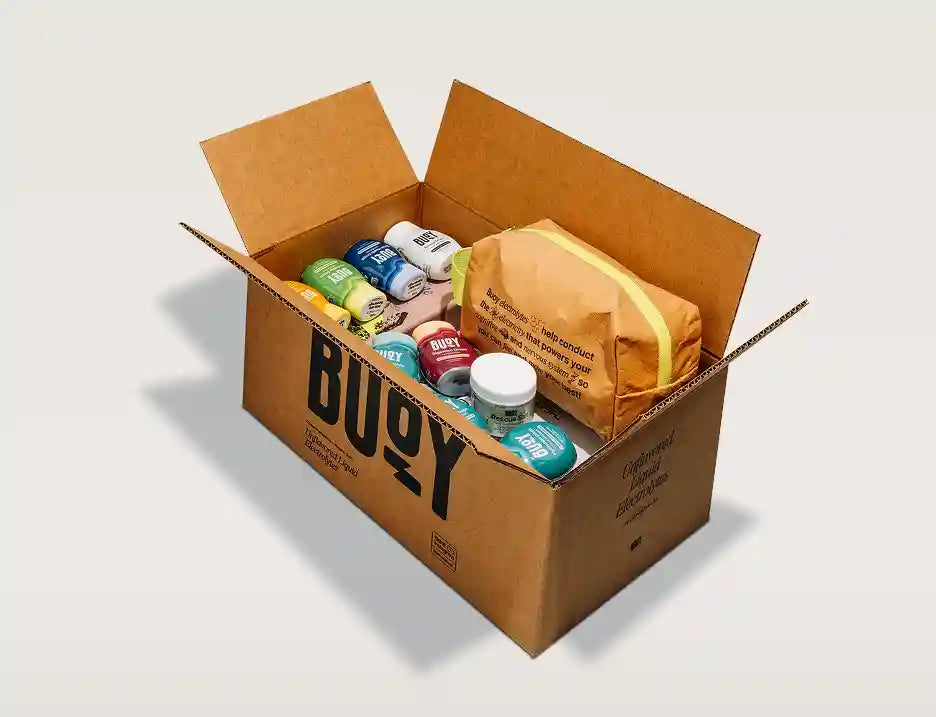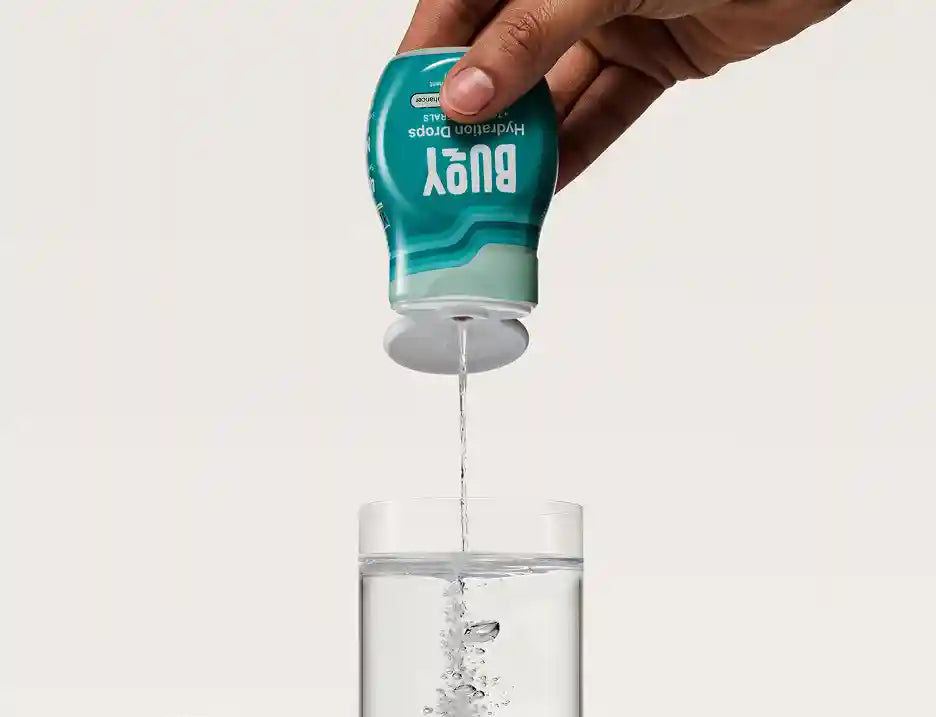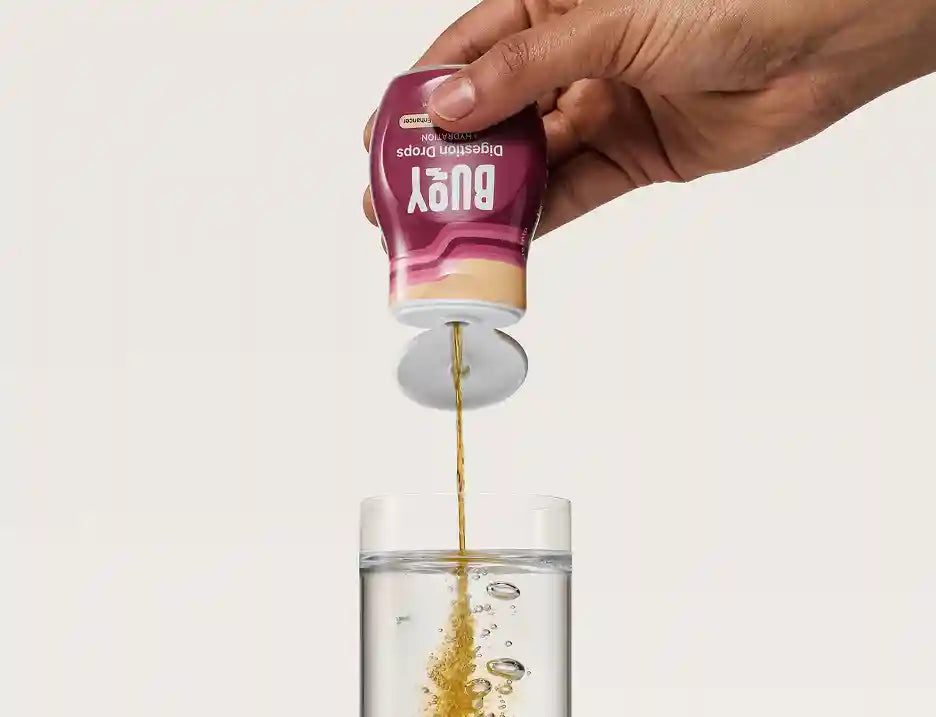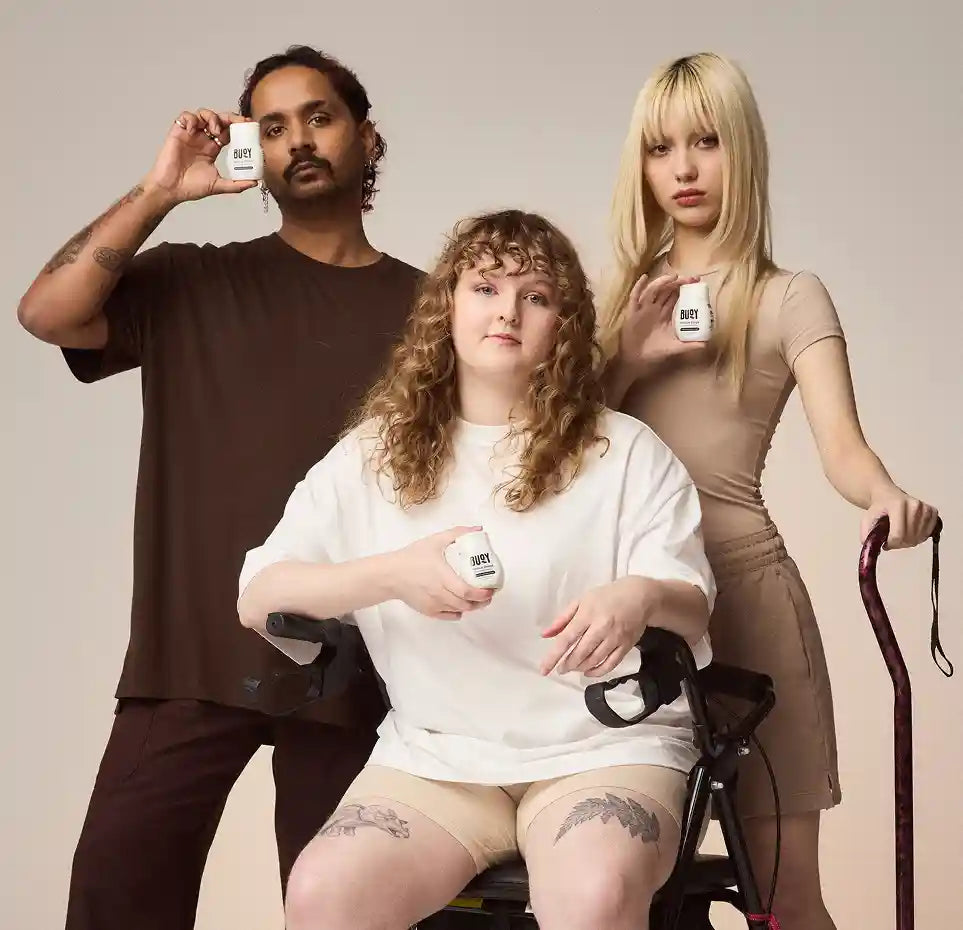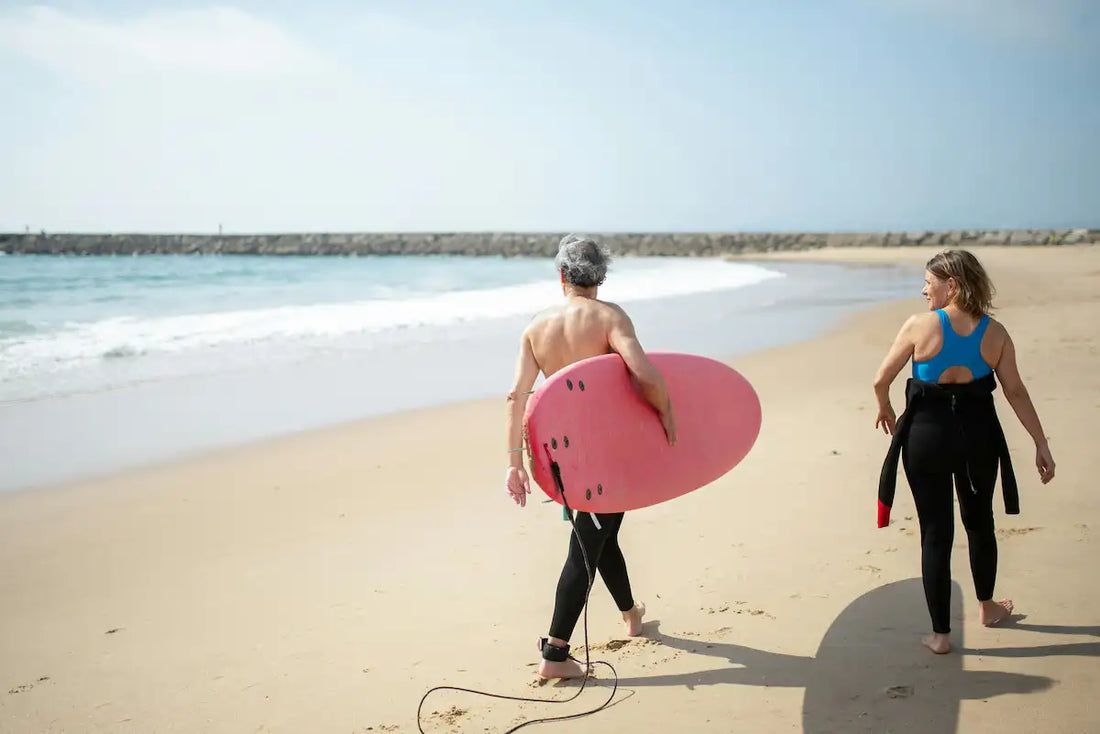
Hydration for Older Adults: Why Electrolytes Matter as You Age
Share
As the years add up, hydration starts to look different. Thirst cues can fade, total body water decreases, and it’s easier to slip into mild dehydration without noticing.[1][2][9] Energy dips come sooner, and on days when meals are light or medications are in play, you might not realize how quickly fluid and minerals fall behind.[2]
Electrolytes are the charged minerals that regulate your body’s fluid balance, and they become even more important as you age. They help your heart beat steadily, your nerves send signals clearly, and your muscles contract smoothly.[3][4][5][6] Yet they’re often the missing link when older adults struggle with low energy, leg cramps, or confusion that seems to come out of nowhere.[1][4][6]
Essential Takeaways
- Sodium, potassium, magnesium, and calcium regulate fluid balance, nerve function, and blood vessel tone, key to clarity, steadiness, and energy.[3][4][5][6]
- Thirst becomes less reliable with age; a simple sip schedule works better than waiting for thirst.[1][9]
- Food first remains the foundation; use clean electrolyte drops to fill small gaps on low-intake days or during heat.[1][7][8]
- Medications and chronic conditions can alter electrolyte needs, always check with your clinician before adjusting intake.[2]
- Hydration works better with electrolytes present, not just plain water.[7][8]
At Buoy, we’ve learned that hydration isn’t just about water, it’s about balance. A clean, gentle electrolyte formula like Immunity Drops or Hydration Drops helps you hold on to the water you drink and absorb it properly, without sugar or caffeine.
- Why Hydration Changes with Age
- The Core Electrolytes for Seniors
- Building a Senior-Friendly Hydration Routine
- Senior Plates That Deliver Minerals
- Hydration That Actually Helps
- Where Immunity Drops and Hydration Drops Fit In
- Everyday Moments When Electrolytes Can Make a Difference
- Safety Considerations for Electrolytes and Hydration in Seniors
- References
Why Hydration Changes with Age
Your body’s relationship with water naturally shifts over time. Thirst and other fluid-regulation mechanisms can become less sensitive, so you may not feel thirsty even when mildly dehydrated, and average total body water declines with age.[1][9] Kidney function also tends to diminish, leaving less “reserve” to conserve water or excrete excess sodium.[2] Many common medications (for example, some diuretics and blood pressure medicines) can further affect fluid and mineral balance.[2]
Even subtle appetite changes matter. Eating fewer fruits, vegetables, or dairy products reduces natural sources of potassium, magnesium, and calcium, minerals that help your body retain and use water efficiently.[6][4][5]
The Core Electrolytes for Seniors
Sodium and Potassium
Sodium helps your body hold fluid in the bloodstream and supports circulation and blood pressure. Potassium helps the body excrete excess sodium and relaxes blood vessel walls. Together, they regulate the movement of water in and out of cells to keep nerves, muscles, and the heart working as they should.[3][6]
Many adults consume too much sodium from processed foods and too little potassium from produce; rebalancing with beans, lentils, potatoes, leafy greens, citrus fruits, and yogurt can help.[3][6]
Magnesium
Magnesium supports muscle relaxation, nerve conduction, and cellular energy production; inadequate intake is common in older adults who rely on refined foods or take certain medicines.[4] Signs may include calf cramps or restless legs. Good sources include nuts, seeds, legumes, whole grains, and dark leafy greens.[4]
Calcium
Calcium is essential not only for bones but also for proper vascular and muscle contraction and relaxation.[5] Foods include milk, yogurt, kefir, tofu (set with calcium), fortified plant milks, and leafy greens such as kale or bok choy.[5]
Trace Minerals with Supportive Roles
Zinc and selenium are needed in small amounts and support immune and antioxidant functions; seafood, eggs, legumes, nuts, seeds, and whole grains can meet needs.[10][11]
Building a Senior-Friendly Hydration Routine
Hydration routines work best when they’re simple and repeatable. Try a “sip schedule” (after waking, mid-morning, lunch, mid-afternoon, evening) rather than waiting for thirst, which can be a late signal in older adults.[1][9]
- Pair fluids with small snacks to add minerals naturally (e.g., water with fruit, tea with nuts).
- Keep fluids within reach at your desk, bedside, or favorite chair.
- Add clean electrolyte drops to one or two glasses daily on warm days, during travel, or when appetite is low.[1][7]
Senior Plates That Deliver Minerals
When appetite is light or digestion feels sluggish, small nutrient-dense meals are often better than large portions:
- Broth bowls with vegetables, noodles or rice, and protein provide fluid, sodium, and potassium in an easy-to-digest format.[6]
- Beans with greens and potatoes bring potassium, magnesium, and fiber for steady energy.[6][4]
- Yogurt or kefir bowls with fruit and oats offer calcium, potassium, and magnesium in a small serving size.[5][6][4]
- Nut butter on toast with banana combines magnesium and potassium with healthy fats for quick energy.[4][6]
- Vegetable omelets (spinach, mushrooms, peppers) deliver minerals without feeling heavy.[4][6]
Hydration That Actually Helps
Plain water is essential, but water plus electrolytes improves fluid absorption and retention when losses are high. Oral rehydration solutions (ORS) use sodium and glucose together to enhance fluid absorption via sodium-glucose cotransport; they’re proven for dehydration from illness and heat stress and recommended in clinical guidance.[7][8]
- Use ORS during significant fluid loss (e.g., acute diarrhea or heat illness) per medical guidance.[7][8]
- On typical days, clean electrolyte drops in water can gently support hydration without added sugar.[1]
- Sip throughout the day rather than chug large volumes at once.
Where Immunity Drops and Hydration Drops Fit In
Both Immunity Drops and Hydration Drops are designed to make hydration simpler for seniors:
- Immunity Drops include electrolytes and select trace minerals that complement a food-first plan.
- Hydration Drops focus on daily mineral balance and hydration without sweeteners.
These products are not intended to diagnose or treat medical conditions. People with kidney or heart disease, or those taking diuretics, ACE inhibitors, or ARBs should consult a clinician before changing electrolyte intake.[2]
Everyday Moments When Electrolytes Can Make a Difference
| Everyday scenario | What may be happening | Easy first moves | When to add electrolyte drops |
|---|---|---|---|
| Afternoon slump with fuzzy focus | Mild under-hydration or low sodium from plain water alone | Pair water with a light snack (yogurt with fruit, or nuts with a clementine) | Add drops to the next glass to help hold fluid[1] |
| Night leg cramps | Possible low magnesium or overall low fluid from the day | Include greens or beans at dinner and a small portion of nuts or seeds | Add drops to an evening glass if tolerated[4] |
| Standing up feels unsteady | Relatively low blood volume after a light-intake day | Sip fluids with meals; choose potassium-rich sides such as potatoes or beans | Add drops to several small servings across the day[6] |
| Hot day or long errand run | Higher fluid and sodium losses from heat and walking | Bring a bottle and sip on a schedule rather than waiting for thirst | Use drops in the bottle to support absorption and retention[7][8] |
| Appetite is down for a few days | Lower intake of potassium, magnesium, and calcium | Build smoothies with yogurt or kefir, fruit, and oats, or choose a small broth bowl | Add drops to a morning glass while appetite returns[6][4][5] |
Safety Considerations for Electrolytes and Hydration in Seniors
- Talk to your doctor. If you have heart failure, kidney disease, or are on a sodium-restricted diet, ask a healthcare provider before adding electrolytes.[2]
- Don’t overdo it. More isn’t always better. Excess sodium or potassium can cause problems in susceptible individuals.[3][6]
- Be mindful of interactions. Electrolytes and supplements may interact with medications like diuretics or blood pressure pills.[4][6]
- Monitor hydration status. Pale-yellow urine generally indicates adequate hydration; persistently dark or very clear urine can signal imbalance (consult your clinician for individualized targets).[1]
References
- NIH Research Matters — Link between hydration and aging (2023).
- MedlinePlus — Aging changes in the kidneys and bladder.
- American Heart Association — How Potassium Can Help Prevent or Treat High Blood Pressure.
- NIH Office of Dietary Supplements — Magnesium: Health Professional Fact Sheet.
- NIH Office of Dietary Supplements — Calcium: Health Professional Fact Sheet.
- NIH Office of Dietary Supplements — Potassium: Health Professional Fact Sheet.
- World Health Organization — Oral Rehydration Salts (ORS) guidance.
- CDC Yellow Book — Rehydration and ORS in cholera treatment.
- Nutrients (2025) — Hydration Strategies in Older Adults (review).
- NIH Office of Dietary Supplements — Zinc: Health Professional Fact Sheet.
- NIH Office of Dietary Supplements — Selenium: Health Professional Fact Sheet.
